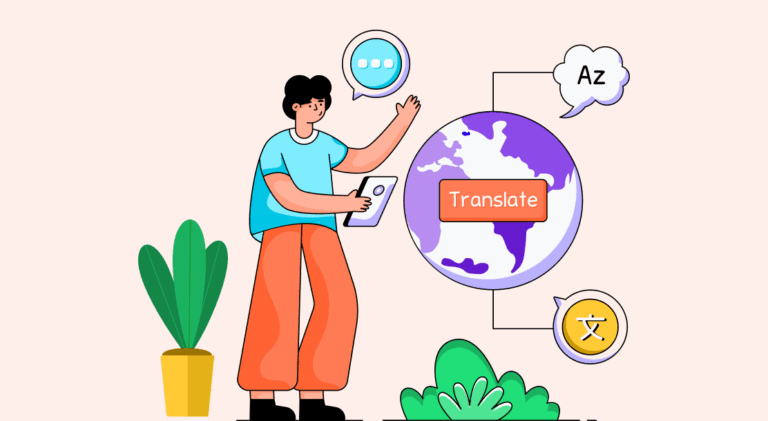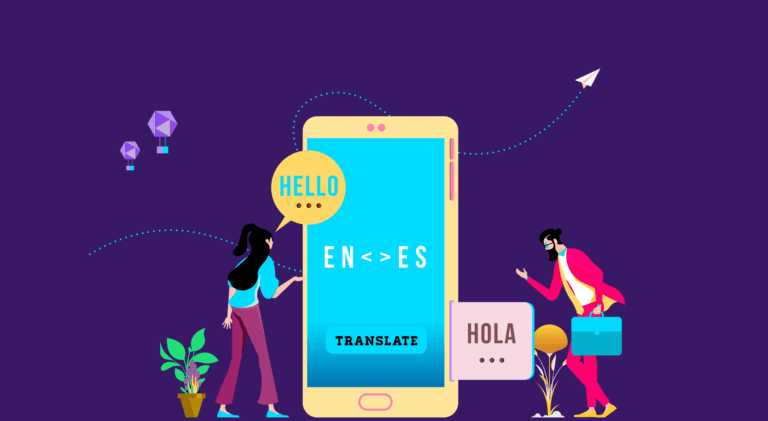6 Tips For Translating Marketing Materials Effectively

As the world gets smaller, businesses are increasingly turning to marketing materials translation services to reach new markets. But all too often, the results are less than ideal. When marketing your business to achieve global potential, it’s important to ensure that your materials are correctly translated.
This often happens because the source material is not adapted to the target market or because the translation itself is of poor quality. To avoid these pitfalls, working with a professional marketing materials translation service with experience in your industry and understanding your target market is essential. They will help in translating marketing materials effectively.
This blog addresses this and more.
What is Marketing Translation?
Translating marketing materials involves adapting marketing materials for a target audience in a different language. This can include everything from website content and product descriptions to advertising campaigns and social media posts.
Localizing your marketing content is essential to reach a global audience. After all, not everyone speaks the same language. By translating your marketing content, you can ensure that your message is clear and understandable no matter what language your audience speaks.

Marketing translation is a complex and nuanced process, but it doesn’t have to be complicated. With the help of a professional translation service, you can quickly adapt your marketing materials for a new market. So if you’re looking to expand your business to a new country, don’t forget to factor in marketing translation. It could be the key to your success.
Here are six tips to help you get the most out of your marketing materials translation and ensure that your message comes across loud and clear!
1. There’s more to translation than simply getting the words right
Yes, translating words from one language to another is important. But if you want to create genuinely effective translations, there’s more to it than just getting the words right.
For example, let’s say you’re translating a manual for a product sold in Japan. In addition to translating the words, you also need to consider that Japanese culture is very different from Western culture. This means that you’ll need to adapt the tone and style of the manual to better suit the Japanese audience.
Translating marketing materials is important, but it’s not just about translating words. It’s also about understanding the culture of the people you’re translating for. Only then can you create truly effective translations.
2. Keep your sentences short, simple, and sweet.
Using short sentences in marketing translation can take time and effort. After all, you’re trying to take a message that was written in one language and communicate it effectively in another. This can often lead to long, complicated sentences that must be clarified.
However, shorter sentences are the easiest to understand. You don’t need to play with challenging and complicated words in another language. By keeping your sentences concise, you can ensure that your message comes across loud and clear, no matter what language it’s being translated into. A successful campaign is all about short, snappy phrases that anyone can easily remember.
3. Be careful while using idiomatic expressions.
In marketing material translation, it’s important to be careful when using idiomatic expressions. Idiomatic expressions are phrases unique to a particular language or culture and can’t be directly translated into another language.

For example, the phrase “to have your head in the clouds” is an idiomatic expression that means you’re not paying attention to what’s happening around you. If you were to translate this expression into French directly, it would be “avoir la tête dans les nuages,” which doesn’t make much sense.
While idiomatic expressions can add color to your writing, they can also confuse your audience if they’re not appropriately translated. So if you’re using idiomatic expressions in your marketing materials, make sure to test them out with your target audience before you publish them.
4. Be consistent with your messaging
In any form of marketing, be it online or offline, it is essential that your messaging is consistent across all platforms. This can be difficult to achieve, especially when you’re working with multiple team members on a marketing campaign. However, it is essential to maintain a cohesive brand image and avoid confusion among your target audience.
Define your key messages upfront and ensure everyone on the team is aware of them, especially the translation team. Create a style guide for the campaign that outlines how the key messages should be communicated. You can also appoint one team member to be in charge of the campaign’s messaging and have them review all content before it is released.
You must ensure that your marketing campaign has a consistent message that will resonate clearly with your audience.

5. Make sure your visuals are on point.
When translating your digital marketing materials into other languages, it’s vital to ensure that your visuals are on point and make sense with the translation. After all, a picture is worth a thousand words – and if your visuals don’t match up with the translation, it can confuse your audience.
Keep a few things in mind when you’re working on your visuals. First, think about the message you’re trying to communicate. What do you want your audience to see? Second, consider the culture of your target audience. What visuals will make sense to them? And finally, think about the overall tone of your translation. What visuals will help you capture that tone?
Keep these things in mind, and you’ll be sure to create visuals that are on point and make sense with your marketing translation.
6. Be clear about your calls to action.
While translating digital marketing materials, it’s important to be clear about your calls to action. Whether you’re trying to get someone to buy a product, sign up for a service, or take another action, you need to be clear and concise in your language. Otherwise, you risk losing your target audience’s attention.

Fortunately, you can follow some simple tips to ensure effective calls to action. Make sure your tone and language are clear and easy to understand. Use solid and active verbs to get your point across. Test your CTAs to ensure your target audience can easily resonate with them.
In the End
A great translation service can be a valuable asset for a growing brand. Note that a good translation is not just about words but much more. It’s about considering the cultural context and ensuring that the translation is appropriate for the audience. It’s a complex and challenging task, but it can also be incredibly rewarding.
Translation is the best way to bridge cultures and to connect people from all over the world. With proper translation, you can create surprisingly effective campaigns to resonate with millions of audiences.

FAQs
If you want to run a global campaign, opt for a translation service that can provide multiple translations for different parts of the campaign. You must consider the experience, portfolio, and team’s approach while choosing the right service. If you want only one language, you may opt for a professional translator in one language on a smaller budget.
A good translation will capture the spirit of the original work and convey the author’s message clearly and concisely. A bad translation, on the other hand, can be confusing and misleading. It all comes down to the skill of the translator. A good translator will have a deep understanding of both the source and target languages. And a lousy translation is nothing more than a word-to-word translation.
Translation allows businesses to reach new markets and connect with customers in different parts of the world. It also helps businesses better understand their customers and create products and services that meet their needs.
Latest Blogs
Explore how Google’s 2025 AI search updates triggered ranking chaos. Learn actionable strategies to adapt your SEO for AI Overviews, zero-click searches, and SERP volatility. Stay ahead now.
Learn how to rank on AI search engines like ChatGPT, Perplexity, and Gemini by optimizing your content for authority, structure, and relevance. Stay ahead in AI-driven search with this strategic guide.
Explore the best healthcare SEO services for your medical practice. Improve online visibility and effectively reach more patients in need of your services.
Get your hands on the latest news!
Similar Posts

Translation
5 mins read
All You Need to Know About Language Translation and Terminology Management

Translation
5 mins read
6 Reasons to Translate Content into German

Translation
5 mins read